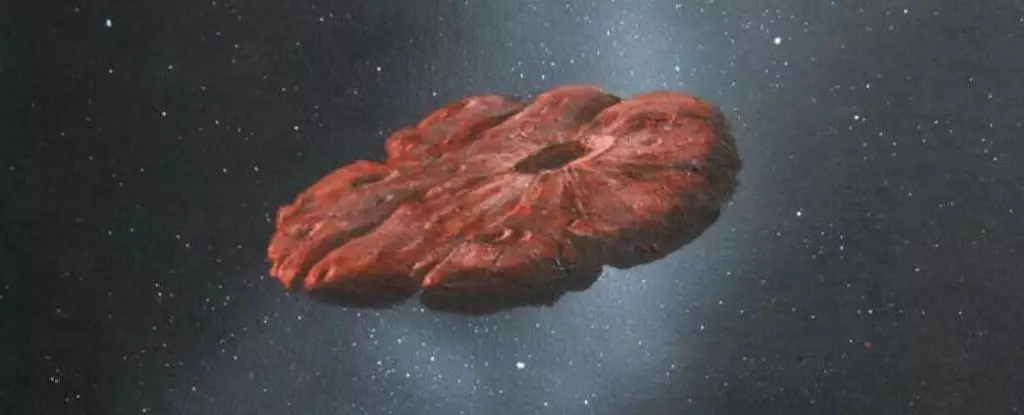In 2017, the astronomical community was sent into a frenzy with the arrival of a peculiar, elongated object, which scientists later named ‘Oumuamua—Hawaiian for “scout.” This uninvited guest was the first confirmed interstellar object (ISO) to enter our Solar System, measuring around 400 meters in length and resembling a cosmic cigar more than a celestial body. The implications were staggering; we were witnessing a fragment of another star system, possibly ejected into the void after a cataclysmic event, such as a violent planetary collision. The sighting of ‘Oumuamua marked a paradigm shift in our understanding of the cosmos, hinting that we live among vast numbers of interstellar wanderers.
Yet, the thrill of discovery coexists with frustration. To date, only one other ISO—the Borisov Comet—has been spotted, raising a critical question: if there are an estimated 10 septillion ISOs in the Milky Way, why do we see so few? Unlike the planets of our Solar System, ISOs are elusive entities, streaking through the cosmos at remarkable speeds, often giving us little to no warning before pass-through.
The Challenges of Detection and Observation
The astronomical challenge lies in our current inability to predict the paths of these cosmic interlopers accurately. Large ISOs, like ‘Oumuamua, only pass by the Solar System infrequently and at blistering velocities, averaging around 32.14 km/s. By the time they are detected, it’s usually too late to mobilize any missions for a closer look. Our ground and space-based telescopes are under-equipped to respond with the rapidity required to capture these fleeting opportunities. Consequently, we remain spectators, witnessing these extraordinary cosmic events only after they have gone.
However, the arrival of groundbreaking technological advancements offers a glimmer of hope. Imagine spacecraft equipped with artificial intelligence that can predict the trajectories of incoming ISOs, significantly enhancing our chances of close encounters. With the capacity to make instantaneous decisions based on real-time data, AI could bridge the gap between observation and interaction with these celestial objects.
Future Missions and Their Potential
The promising dawn of ISO-hunting missions is already upon us. NASA’s Bridge mission and ESA’s Comet Interceptor aim to change the game by laying in wait for ISOs. The concept behind the Comet Interceptor is particularly innovative—deploying small robotic probes that can spring into action once an ISO is identified. By placing them in a “storage orbit,” these missions could serve as our eyes and ears in the cosmos, ready to ambush comets or potential ISOs without the extensive time constraints associated with launching from Earth. Scheduled for 2029, the Comet Interceptor will represent only the first step in what could become a fleet of missions—each improving our understanding of the universe.
Despite the promising developments, the road ahead is fraught with technical challenges, notably the need for extreme speed. Current methods for catching up to an ISO involve complex gravitational slingshots that take significant time and resources. We need to rethink propulsion methods; emerging technologies such as solar sails present an exciting avenue. By harnessing sunlight, these sails could propel spacecraft more efficiently than traditional heavy fuel tanks, enabling more nimble responses to incoming ISOs.
Materials and Technologies in Evolution
Another vital consideration is the durability of spacecraft approaching these high-speed visitors. As ISOs glide through space, they can eject dust and debris, which poses a risk of erosion on any spacecraft that dares approach them. Traditional shielding adds weight to spacecraft, which may reduce their velocity, necessitating the search for innovative materials. The future beckons the use of advanced composites like carbon fibers that are lightweight yet durable. Some researchers are also exploring the application of unconventional materials like ceramics and cork, revolutionizing our approach to spacecraft shielding.
Combining these technological advancements with ground-based telescopes will be crucial in developing a comprehensive strategy to pursue and study ISOs. The synergy of terrestrial and space-based instruments could allow for a unified front against the cosmic unknown. However, an alarming backdrop remains: potential cuts to space science funding threaten these missions before they have a chance to unfold fully. The possibility of dialing back critical observatory programs, like the James Webb Space Telescope, could stifle innovation just as we stand on the brink of discovery.
The race to explore interstellar objects is not merely an academic exercise—it is a quest to broaden our cosmic perspective. Embracing these emerging technologies might propel humanity into a new era of space exploration, where instead of mere observation, we actively interact with the enigmatic features of our universe. The quest to chase and understand ISOs will invariably transform our comprehension of existence beyond our Solar System, enriching humanity’s narrative in the cosmic saga.


Leave a Reply